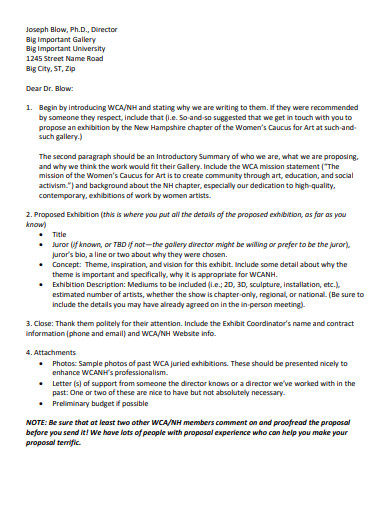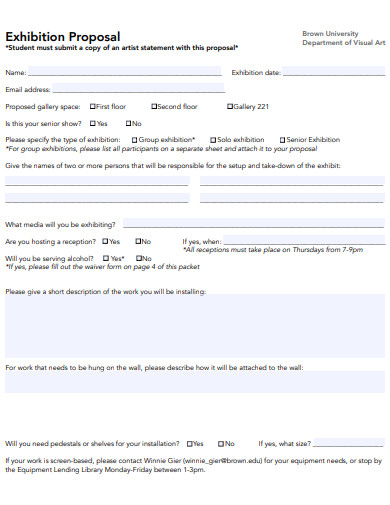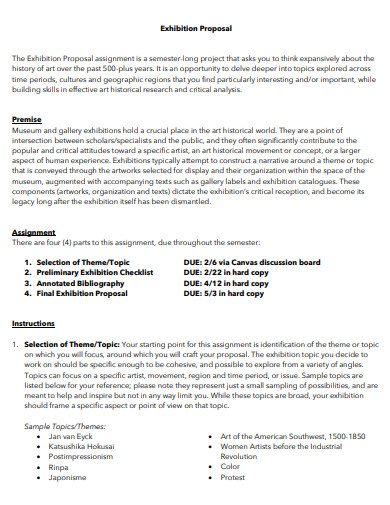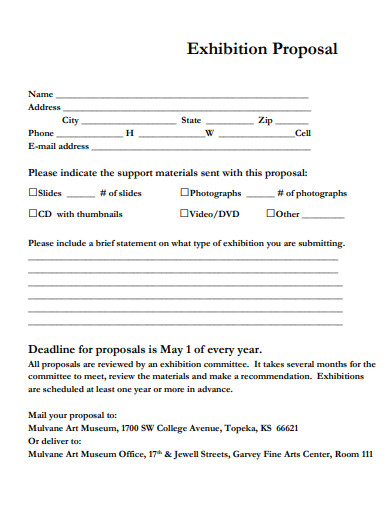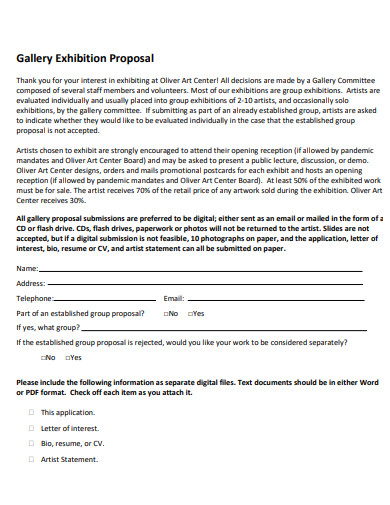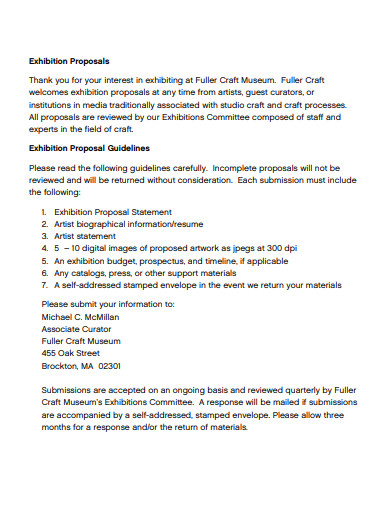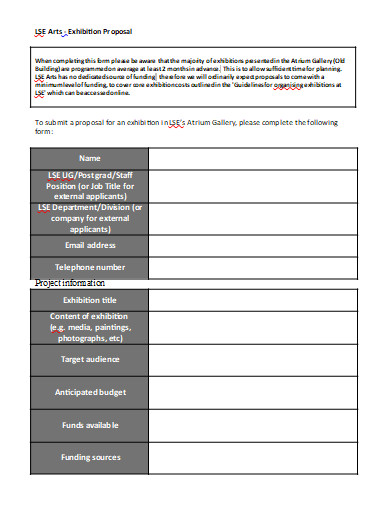Any new artist’s first solo exhibition is a huge accomplishment. It’s not only a fantastic way to commemorate the completion of a body of work, but it’s also one of the most effective methods to get your art in front of a big, art-loving audience. A solo show is undoubtedly a significant achievement, but it can be difficult to attain. There are numerous considerations to make, many of which are beyond your control. Moreover, galleries are sometimes booked months, if not years, in advance. If you’re ready to show your work, though, putting together a good proposal and approaching gallery owners and decision-makers in the proper way will help you stand out from the crowd.
So you think you’ve got what it takes to put on your own one-of-a-kind art show? How do you demonstrate this to the gallery owners and curators who may show your work? As an artist, the ability to write exhibition proposals is extremely valuable. To create an exhibition proposal, you don’t need to be a brilliant writer; the most important thing is that you have a clear vision of what you want the show to be like and how you’ll put it together.
10+ Exhibition Proposal Samples
1. Exhibition Proposal
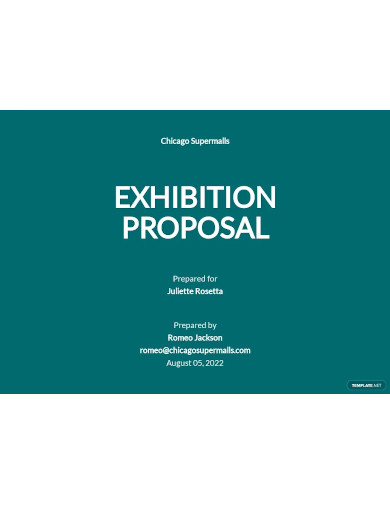
2. Gallery Exhibition Proposal
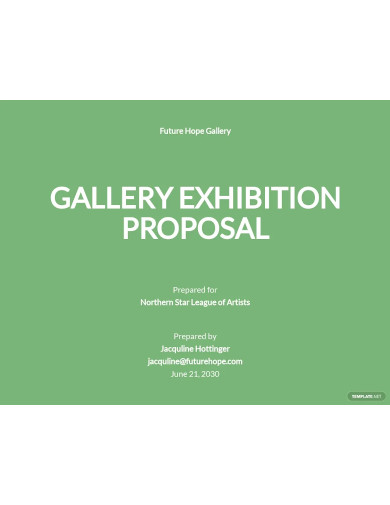
3. Artist Exhibition Proposal
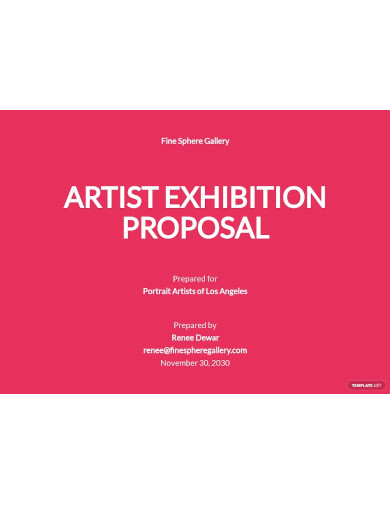
4. Juried Exhibition Proposal
5. Sample Exhibition Proposal
6. Simple Exhibition Proposal
7. Basic Exhibition Proposal
8. Science Exhibition Proposal
9. Sample Gallery Exhibition Proposal
10. Exhibition Proposal Format
11. Simple Art Exhibition Proposal
Steps on How to Create an Exhibition Proposal
- Describe your artwork – What is the scope of the piece you’re exhibiting? Is it a collection of works? Sculptures? Is it possible to have a room-sized installation? Is this going to be a timed performance? Give a detailed description of what you intend to display in the gallery, taking into account the size of the area and how the art will fit inside the structure. Make certain that the type of art you intend to create is compatible with the gallery’s usual exhibits. Even if you haven’t completed all of the work yet, you must have a clear plan so that the gallery owner understands how everything will function. Minor alterations that occur throughout the creation of the piece are most likely negotiable.
- State the concept of your artwork – Why are you grouping these works together, or why does this one installation or performance deserve to be seen by the general public? You must understand and be able to communicate the intellectual ideas that underpin both your artwork and the presentation. Is this a solo show or are you participating with a group of friends? Is the work more focused on a certain subject or issue, or is it exploring the formal possibilities of a particular medium? These are all excellent questions to ponder while brainstorming.
- Put a catchy title – While not every art show is required to have a title, practically all group shows and most solo displays do since it serves to introduce the work to the audience and initiate conversation. Even if you don’t want to be too explicit about the content of your work, a title can help tie everything together.
You’ll be one step closer to getting that gallery show if you make sure to include these three crucial factors in any exhibition proposal you create. Remember to be confident in your art and concept; if you know it’ll be a great show, selling it to the curator or gallery owner will be a lot easier.
FAQs
Why do you need to research exhibition spaces?
You’ll want to find out which galleries accept entries before you start working on your proposal. Many traditional galleries rely on curators and gallerists to identify artists to show, and some still use the representation paradigm.
How will you describe an exhibition plan?
Describe the exhibition plan in detail: how will viewers interact with the work? Take into account the gallery’s size and arrangement.
Why do you have to ask galleries if they accept proposals?
If any of the galleries in which you’re interested haven’t publicly announced that they’re accepting bids, you should contact them. Email is, without a doubt, the best way to contact the gallery. Traditional and alternative galleries can be difficult to reach via phone. Sometimes the curator isn’t available full-time, or the gallery operates on strange hours.
I understand that planning an exhibition might be stressful for the artist, but it’s business as usual for gallery owners, attendants, and curators. Pay attention to their opinions and advice. If they require additional information from you, provide it as soon as possible. They, like you, want a good concert, so be open, adaptable, and dependable, and everything will work out!
Related Posts
Proposal Samples
Sports Event Proposal Samples
Small Business Proposal Samples
Title Project Proposal Samples [ Community, School, Student ]
FREE 10+ Health Project Proposal Samples [ Public, Mental, Healthcare ]
FREE 11+ Engineering Project Proposal Samples in PDF | MS Word
FREE 4+ Racing Sponsorship Proposal Samples [ Team, Car, Driver ]
FREE 10+ Nursing Project Proposal Samples [ Community, Health, Clinical ]
FREE 11+ Student Council Proposal Samples in PDF | DOC
FREE 8+ Joint Venture Proposal Samples [ Commercial, Real Estate, Construction ]
FREE 10+ Scholarship Proposal Samples [ Project, Grant, Sponsorship ]
FREE 10+ Network Project Proposal Samples [ Design, Security, Bank ]
FREE 14+ Accounting Proposal Samples in PDF | MS Word
FREE 10+ Church Event Proposal Samples in MS Word | Google Docs | Apple Pages | PDF
FREE 10+ History Proposal Samples [ Dissertation, Thesis, Paper ]

